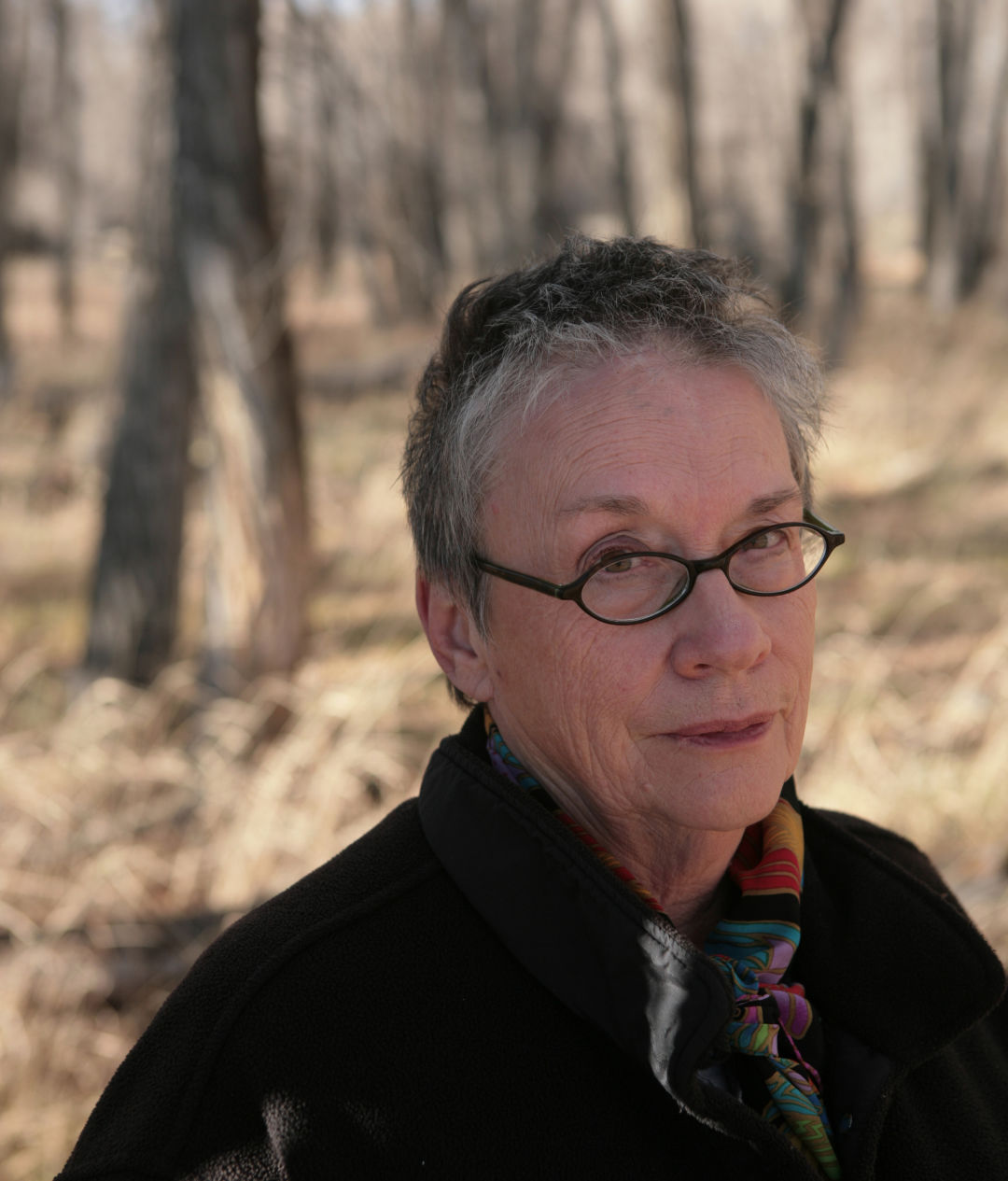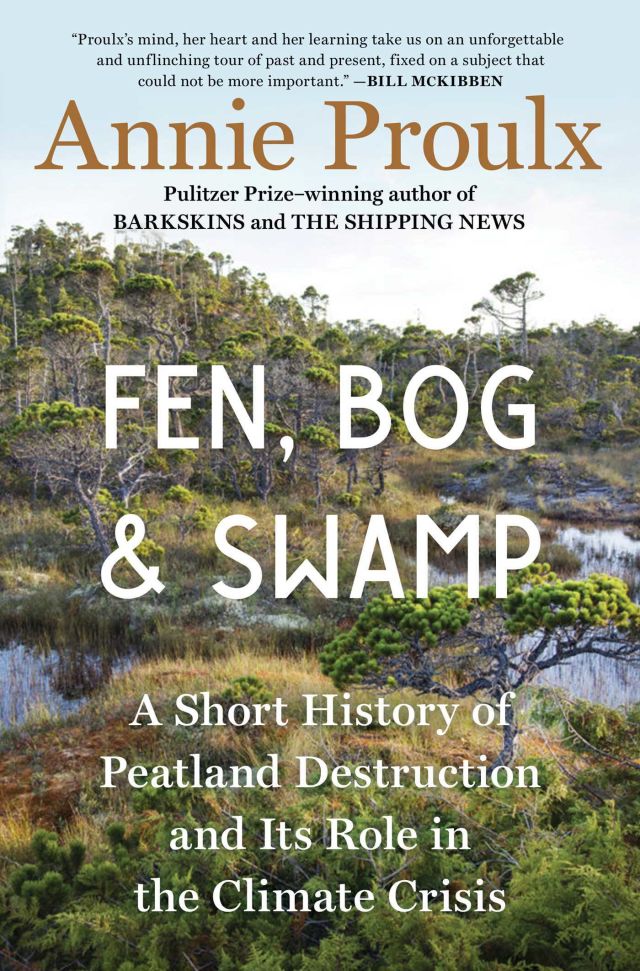Can Annie Proulx’s New Book Meet Climate Crisis Urgency?

Annie Proulx.
How much have we spurned our wetlands? For an answer, in the U.S., you needn’t look much beyond idiom. Here, we get “swamped” and “bogged down” at work, then rise from our chairs with nasty cases of “swamp ass.” A candidate can run for president claiming to “drain the swamp.” And he can win, then attempt to do so not metaphorically, but rather literally.
Thus Annie Proulx’s new book—Fen, Bog and Swamp: A Short History of Peatland Destruction and Its Role in the Climate Crisis, out September 27—should land as an acute corrective. Proulx lived in peaty Port Townsend until recently, and she understands the American disdain for wetlands. After the Civil War, as the U.S. swelled, she writes, “this was a country of rich absorbent wetlands that increasingly no one wanted and most despised.”
Yet, vitally, certain wetlands—fens, bogs, swamps—create peat, “partially rotted and compressed plant material” that has settled in the water. It happens to be a key CO2 sink, covering about 3 percent of the earth, more than all the rain forests together. Per one study, each hectare of peatland that’s removed releases 2.1 tons of carbon in a year. Wetlands mediate floods and pollutants. So peat, ugly and obscure, needs an advocate. It needs a powerhouse storyteller, a gifted environmentalist, one particularly suited to elucidating peat’s importance. It needs, it would seem, Annie Proulx.
Before her Pulitzer for The Shipping News, before her short story “Brokeback Mountain” became fodder for a Hollywood film, before her mammoth novel about trees, Annie Proulx cut her teeth writing about salads, cider, and grapes—a sort of homesteading gourmand. Fen, Bog and Swamp is her first non-memoir, nonfiction book since those early how-tos, both a career swerve and a return to her roots. The focus lands not on human characters, as in her fiction, but firmly on the natural world.
This is where Fen, Bog and Swamp hits trouble. In her finest works, Proulx engrosses us with story and character. Yet here she is content to begin with a section called “Discursive Thoughts on Wetlands,” perhaps the least salable phrase I can imagine and an apt title for her whole project. To start, she writes that she likes “tracing ideas and their connections to unlikely places and old books…. I am easily enchanted when an odd idea or phrase looms on a page.”
Quickly, her enchantment gets the better of her. Her discursiveness flows well beyond wetlands. We get a childhood reminiscence about a swamp, several pages on clear-cuts and fires in the Amazon, scattered thoughts on climate change’s links to the pandemic, a stretch pondering Thoreau’s wandering ways, which leads to Proulx mentioning ecologist Charlie Crisafulli, who discovered a “parsley fern” growing in the ashes after Mount St. Helens erupted. What does Crisafulli have to do with peatlands? Unclear! But no matter, because now Proulx is on to Charles Wohlforth’s The Whale and the Supercomputer, which isn’t about wetlands either.

Some writers can make such topical wanderlust thrilling, stitching together a bright quilt. Proulx seems content to pull out various scraps of fabric and leave them in a pile. Some of these bits are compelling on their own. The book comes to life in flashes of odd anecdote and memoir, in bright insights. “I came away from that wetland,” she writes after a childhood reminiscence, “sharing my mother’s pleasure in it as a place of value but spent years learning that if your delight is in contemplating landscapes and wild places the sweetness will be laced with ever-sharpening pain.”
Yet over the book’s 172 pages, plus citations, she doesn’t seem to have learned from another of her insights: “Many fens, bogs and swamps show the human need for a story.” The book is stuffed with factoids, anecdotes, digressions, and historical quibbles, but never coheres into a singular story. There is one here: For centuries, European cultures and their global tentacles have scorned wetlands and erased them. By 198o, about half of U.S. wetlands were gone.
That narrative obscurity is a baffling shame. I now know far too much about a minor historical dispute on the exact location of the Battle of Teutoburg Forest, where German tribes defeated Romans in a bog. And I know far too little about, say, conservationists—either historical or present—setting an example of how we might save and restore our wetlands. Such stories should be a pressing matter, especially for a writer. What better tool than story can make the scattered, immense, data-riddled conundrum of climate change comprehensible and immediate?
More than anything, the book needs a bracing edit. In fact, it’s already gotten one. In July, Proulx published “Swamped” in The New Yorker. Mostly, the article’s 6,000 or so words come from the book. In the magazine they arrive tightened, shaped. But in the book, unable or unwilling to meet crisis with the clarity it demands, Proulx remains a writer mired in her own curiosities.




